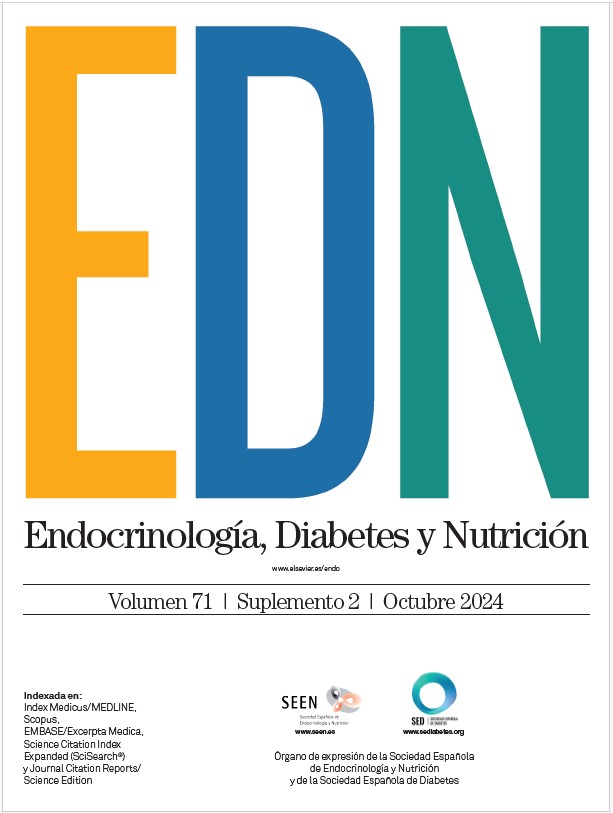361 - PRIMARY HYPERPARATHYROIDISM AND LUNG CANCER. MORE THAN A COINCIDENCE? REPORT OF TWO CASES
1Servicio de Endocrinología y Nutrición, Hospital Universitario La Paz, Madrid. 2Servicio de Otorrinolaringología, Hospital Universitario La Paz, Madrid. 3Servicio de Medicina Nuclear, Hospital Universitario La Paz, Madrid. 4Servicio de Radiología Hospital Universitario La Paz, Madrid. 5Servicio de Oncología Médica, Hospital Universitario La Paz, Madrid.
Introduction: An immune checkpoint inhibitor (ICI)-induced primary hyperparathyroidism (PHPT) has recently been reported in a 50-year-old man with advanced small-cell lung cancer (LC) treated with camrelizumab (anti-PD-L1), and the use of [18F]F-Choline PET/CT (PETcol) in PHPT has increased the chances of occult malignancy incidental detection, like LC. Here, we report 2 patients illustrating these 2 situations.
Case reports: Case 1: A 52-year-old male, smoker of 7 cigarettes/day, presented in April 2013 with hemoptysis and left chest pain. A 10 cm left lung adenocarcinoma with bilateral metastatic adrenal masses was discovered. He was started on cisplatin (CP) and in November 2014, due to progression, moved to an anti-PD-L1 with rapid and large shrinkage of the LC until 4 cm, and of the bilateral adrenal masses (disappearance of the right). A PHPT with an ectopic mediastinal 3.1 cm, 5,052 g parathyroid adenoma (PA) was revealed and successfully operated in June 2016. 11 years after initial diagnosis he remains stable and well of his stage IV T4NxM1 LC and cured of the PHPT. Case 2. A 73 years-old woman, ex-smoker of 20 cigarettes/day, that had been studied since 2009 for several endocrinologists in different medical centers, was referred by phone consult in July 2020 for HPTH. A (99m)Tc-sestamibi SPECT/CT performed in other center was negative, but a PETcol showed a right PA, and lung and mediastinal masses suggesting LC. HPTH was cured after resection of a right 299 mg PA on March 2021. She was started on CP/vinorelbine, then changed to carboplatin, and also received radiotherapy and durvalumab for her T1bN2Mx squamous cell LC.
Discussion: With the spectacular survival improvements achieved by ICI in LC and the expansion of the PETcol usage in PHPT, it is very likely that these two scenarios become more common in the future. If there is a net causal relationship between either LC itself or its treatments (like ICI) and PHPT development (or viceversa) in ex-smokers, remains to be elucidated.







